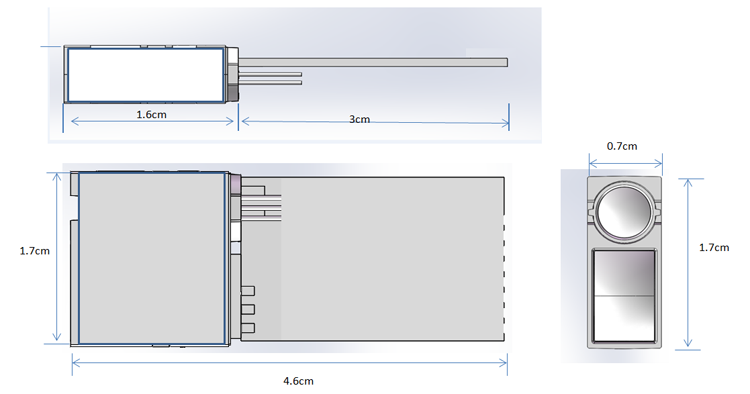Topdressing time, type In mid-June, the topdressing of the topdressing was mainly phosphorus, which expanded the young fruit and enriched the flower buds. From July to August, the topdressing of the topdressing was mainly potassium, and the yield increased obviously and the fruit color was bright. Grasping the critical period of nutrient nutrients and fruit expansion period of the fruit tree twice, the best time for topdressing, this year's fruit is large, the yield is high, next year, the flower buds are full and the fruit is more. Topdressing in the critical period of nutrients, the best time is from early June to late June. At this stage, the flower buds begin to differentiate, and the young fruit rapidly expands. In this period, the most needed supplement is phosphorus, which can enrich the branches, improve the leaf function, and increase the nutrient output of the leaves. The best time for topdressing during fruit expansion: from mid-July to early August. In this period, fruit trees have the strongest nutrient absorption capacity and the highest fertilizer utilization rate. According to the characteristics of fruit tree growth and development, this period should be based on phosphorus and potassium fertilizer, especially the supplement of potassium. Top dressing method Summer fruit topdressing has the effect of promoting fruit enlargement and flower bud differentiation. There are two kinds of topdressing methods: under tree root application and foliar application. In the summer, the topdressing of the topdressing fruit trees should be based on phosphorus and potassium fertilizers, and a small amount of nitrogen fertilizer should be applied. The amount of top dressing depends on the species, age, fruit weight and base fertilizer status. For saplings that have not entered the fruiting stage, each plant can be applied with 0.2 to 0.25 kg of phosphorus and potassium fertilizers. For the general result of large trees, each plant is applied with 2.5 to 3 kg of superphosphate, 10 to 15 kg of ash, and 2 kg of ammonium sulfate. The method of topdressing is to dig a hole in the vertical line of the canopy to the inner 1 meter, the hole distance is 30~40 cm, the depth of the hole is 15~20 cm, and the soil is covered after application. Conditional orchards are topdressed and then watered. Foliar spray fertilizer in the fruit expansion period foliar spray fertilizer has the effect of enhancing tree potential, promoting fruit enlargement and improving quality. The spraying concentration is 0.2% ammonium sulfate, 0.3% to 0.5% urea, 0.3% potassium sulfate, 1% to 3% calcium superphosphate, and 0.3% potassium dihydrogen phosphate. The effect of spraying on the leaves of mountain fruit is better. Precautions First, we must first know that fruit trees absorb nutrients mainly by roots in the roots. Therefore, spraying fertilizer on the concentrated distribution area of ​​root hair can improve the utilization rate of fertilizer and promote the rapid growth and increase of yield of fruit trees. Second, should be based on the crown projection edge or a little farther, not too close to the trunk, because the trunk is thick roots, fine roots and root hair less, is not conducive to the absorption of fertilizer. Third, fertilization should follow the following principles: 1 fruit trees with deep root distribution should be applied in depth, and vice versa. 2 The decomposition of organic fertilizer is slow, but the fertilizer application period is long, and it can be applied deeply. The fertilizer has great mobility and can be applied shallowly. 3 If organic fertilizer is applied to deep-rooted fruit trees such as pear trees, the depth should be 40-60 cm, and organic fertilizer should be applied to shallow-rooted fruit trees such as plum trees, and the depth should be 30-40 cm. After fertilization, a new high-fat film can be sprayed to improve fertilizer efficiency. 4. For orchards that are closed or densely planted, they can be applied shallowly between rows and between plants. It is best not to hurt or damage large roots, so as to fully exert the fertilizer efficiency, improve the utilization rate of fertilizers, and achieve the purpose of increasing production and income. Disclaimer: Some articles on this website are transferred from the Internet. If legal rights of third parties are involved, please inform this website. phone IT02S, is JRT new product in the early 2019, which is a single-point LiDAR sensor, also called tof distance sensor. With a micro size of 46x17x7mm, customers can widely use in many Laser Measurement Solutions. The lidar distance sensor can measure 12m short-range with high frequency up to 100hz. It's great for Unmanned Aerial Systems. If you need us send you data sheet and spec for this products, offering sample as well, pls tell us, thank you.
Accuracy
+/-8cm@ 0.1~3.5m
Measuring Unit
cm
Measuring Range (without Reflection)
0.1-12m
Measuring Time
0.1~3 seconds
Measuring Frequency
100 Hz
Laser Class
Class II
Laser Type
650nm, <1mw, red
Weight
About 5g
Voltage
DC2.5V~+3.5V
Serial Level
TTL 3.3V
Size
46*17*7mm
Operating Temperature
0-40 ℃ (32-104 ℉ )
Storage Temperature
-25~60 ℃ (-13~140 ℉)
2D Laser Distance Sensor,2D Lidar Sensors,Tof Lidar Distance Sensor, Flight Distance Sensor Chengdu JRT Meter Technology Co., Ltd , https://www.accuracysensor.com
IT02S Mini Tof Sensor Module Diagram

Parameters of IT02S:
IT02S – the High performance-price ratio measurement solution
* low power consumption of single transmit and single receive
* small size: 46*17*7mm
* low cost
* proffessional techinical support